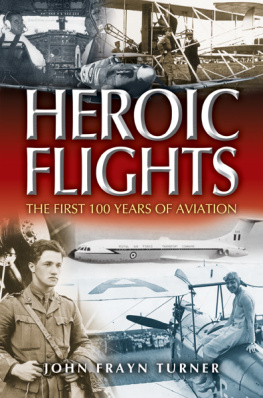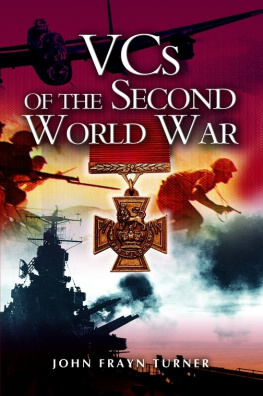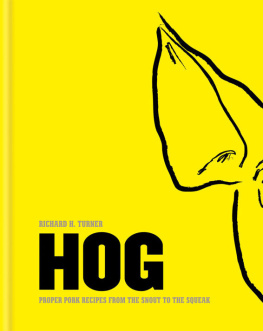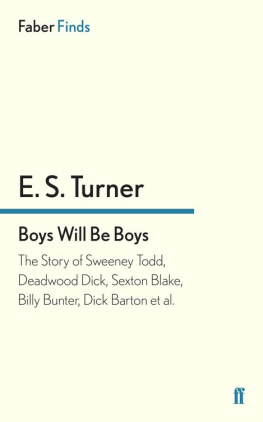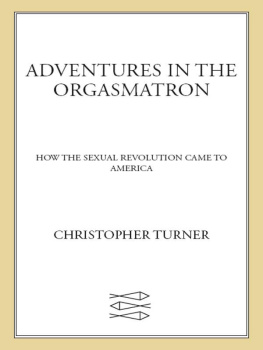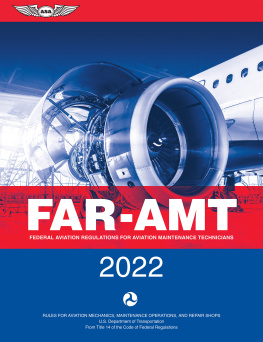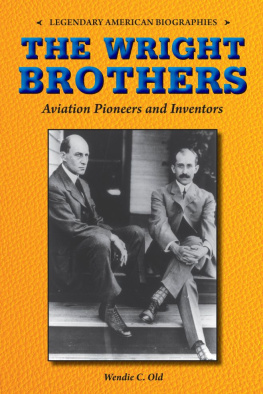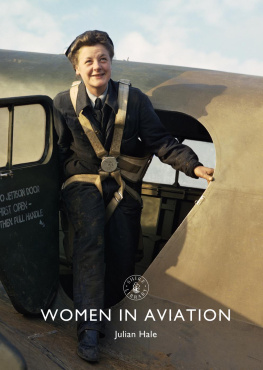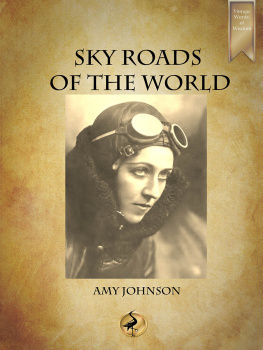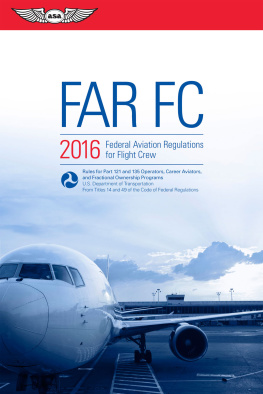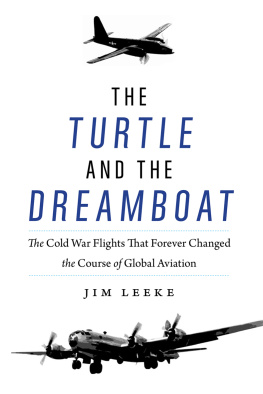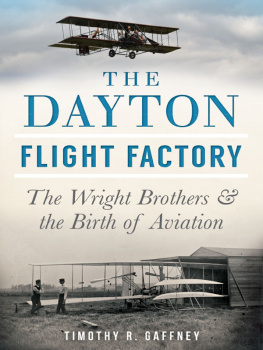First published in Great Britain in 2003 by
LEO COOPER
an imprint of Pen & Sword Books,
47 Church Street,
Barnsley
South Yorkshire,
S70 2AS
Copyright John Frayn Turner 2003
ISBN 0 85052 970 0
PRINT ISBN: 9780850529708
PDF ISBN: 9781783377589
EPUB ISBN: 9781783379781
PRC ISBN: 9781783379583
A CIP catalogue record for this book is
available from the British Library.
Typeset in 11/13pt Sabon by
Phoenix Typesetting, Burley-in-Wharfedale, West Yorkshire.
Printed in England by
CPI UK
CONTENTS
AUTHORS NOTE
This book recalls some of the human highlights in a century of flight. It is more concerned with the fliers than the machines they flew. I have been associated with the air for fifty years and I even watched the Schneider Trophy races long before the war.
As a number of my books have had aeronautical themes, it is inevitable that in this present one I have quoted from several previous titles. Most prominent among them is Famous Flights (Arthur Barker). I have also drawn on material from Famous Air Battles (Arthur Barker), VCs of the Air (Airlife Publishing), Fight for the Air (Airlife Publishing), The Yanks Are Coming (Midas in Britain, Hippocrene in USA) and Fight for the Sky (Sidgwick and Jackson) on which I collaborated with Douglas Bader. are adapted from features I wrote originally for Officer magazine, published by the Ministry of Defence.
Finally, I remain grateful to authors and publishers who originally granted me permission to use brief extracts from any of the above titles.
THE WRIGHT BROTHERS
The Birth of Powered Flight
The seventeenth of December 1903 was the day that man first flew an aeroplane when the Wright brothers made the very earliest sustained, controlled flights in a powered plane at Kitty Hawk, North Carolina, USA.
This brief but historic event, a week before Christmas, was the culmination of years of thought and effort not only by the Wrights but by other aeronautical pioneers.
Wilbur and Orville Wright of Dayton, Ohio, began to take a passionate interest in the problems and possibilities of flight from the time of the death of the great German gliding pioneer Lilienthal in 1896.
Starting from the findings of Lilienthal they determined to develop further the art of gliding and eventually to provide power to drive and control flight and make it more or less independent of the elements. But before they could consider powered flight, they had to get as much practical knowledge as possible of the behaviour of gliders.
They kept their bicycle business going, but spent every spare second building a glider. They found the perfect place to test it at Kitty Hawk, North Carolina, which gave them the climatic conditions they sought: a steady prevailing wind blowing at around twenty miles an hour. This small settlement stood on a long bleak sandbar that bridged the waters of Albemarle Sound and the Atlantic Ocean.
It was there in September and October 1900 that the Wrights started the series of trials which would have their climax three years later. The trio of sandhills they chose for the work were about thirty, eighty and one hundred feet high. That first glider was a biplane with an area of 165 square feet, and an eighteen-feet wingspan designed and built from the findings of Lilienthal and others, and intended to fly with a man in a wind of anything over twenty miles an hour.
The Wrights tried it out first as a kind of man-carrying kite-cumglider. Either Wilbur or Orville would lie flat on the middle of the lower wing to minimize head resistance, and then try to fly from one of the sandhills selected. But although the wind blew at twenty-five thirty miles an hour they found that no matter how they tried, they could not get the upward thrust anticipated, and that the pilot could not control the glider properly.
So they started to modify their ideas, substituting weights for the pilot and flying the glider as a kite. This enabled them to measure the forces operating on the glider in various conditions. They were eventually compelled to the conclusion that this design would never soar but only glide short distances downhill. When they did resume gliding tests again, they took every precaution possible against accidents, although both they and the glider did have one or two close calls in their free glides a couple of yards off the sand.
But by the last week of October 1900, they realized that they had learned all they could from glider number one. Anyway they were getting a little worried about the business, and the weather showed signs of deterioration.
Throughout that winter at Dayton, they busily built glider number two, which was bigger than its predecessor. They increased the wingspan to twenty-two feet; the weight was nearly double, at just under 100 pounds; and it had an overall area of 308 square feet. This glider had the distinction of being the biggest ever made to date. Among other changes, the Wrights decided to try a greater curvature of the wings.
In late July 1901, they carted the new version to Kitty Hawk on what was the equivalent of their summer holidays. The initial test results disappointed them, for it seemed that they had curved the wings too much and produced a loss of control. Each successive test was followed by trial and error modification, but gradually they were coming to understand the concept of control by balancing planes and rudders.
Their glides in August did in fact gradually grow longer in distance and time, but they still felt dissatisfied and made the long trek home to Dayton pretty depressed.
They next turned their attention to the most vital question of all wing design. They started to devise and carry out small-scale tests with model wings in a wind tunnel they rigged up at home. The tunnel measured about five feet long and sixteen inches square, and by injecting a flow of air from a fan they could observe the reactions of it on miniature metal wings which they developed literally daily.
In this tiny tunnel they could simulate wind speeds of twenty-five thirty miles an hour and see precisely what effect these produced on as many as two hundred different designs they tried. For hour after hour that winter the Wrights made notes and readings about the various shapes of model wings. And from all the thousands of notes emerged the design of glider number three.
An impartial observer would have been able to detect signs of real advance, but the two brothers were too close to it all and too involved to be able to see it in proper perspective. They only knew they had to fly somehow.
The wingspan went up from twenty-two feet to thirty-two. This extra width helped to give it greater hoisting power. Other innovations included a double fixed vertical tail and a front elevator. The area of the new glider was about the same as the previous one, at 305 square feet, and it weighed some 116 pounds.
The Wright brothers felt more optimistic this summer and first tried out the glider at Kitty Hawk in September 1902. Kitty Hawk had become their summer residence, but the weeks they spent there were far from a holiday. From dawn to sunset they slogged away, flying the glider again and again.
A few days after their arrival Orville Wright was the pilot during one glide when the right wing started to rise. Trying to control it, however, he made it worse and the wing went on rising, throwing the glider more and more out of balance. The whole glider was now tilted up at a nasty angle.
While Orville grappled with the controls, his brother and a few onlookers below suddenly saw the glider stall and then float backwards and downwards. This was the sort of situation the brothers had struggled to avoid, yet here it was, and those on the ground could only call out vainly. Orville and the glider hit the ground in a spray of sand. The others ran to the wreckage, but luckily Orville was not hurt.
Next page
